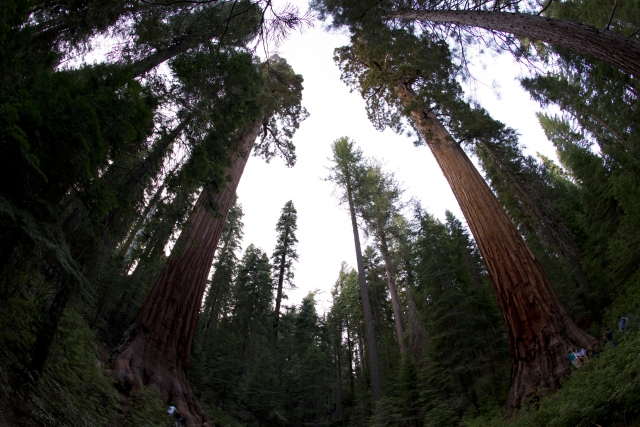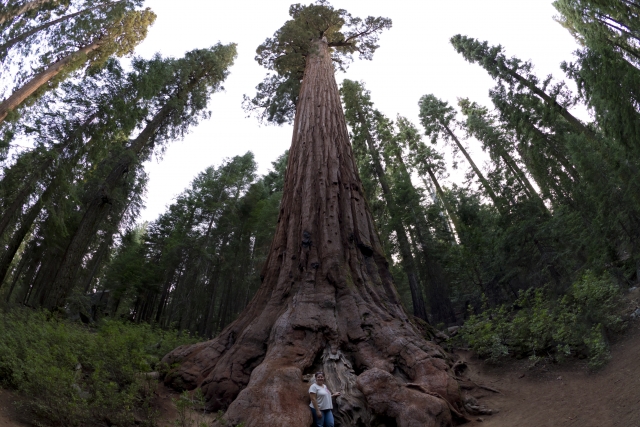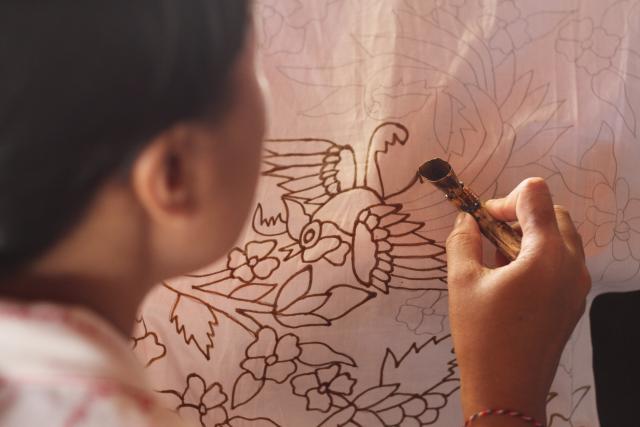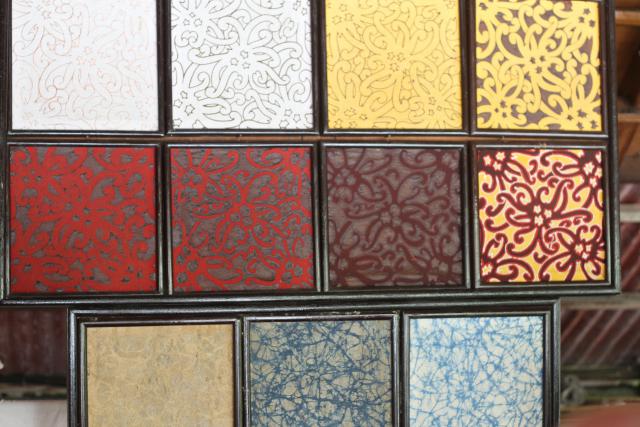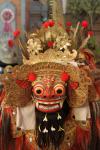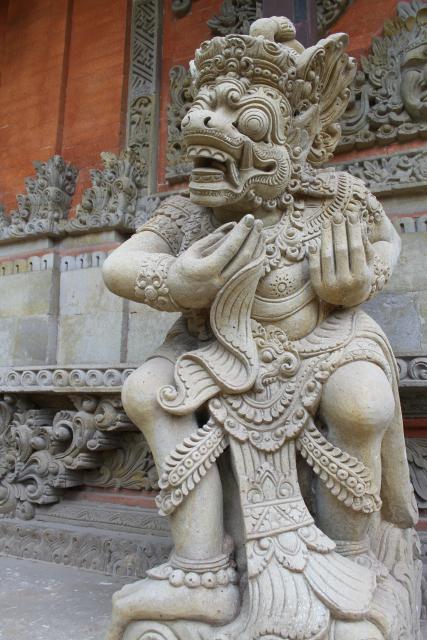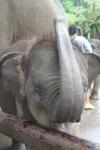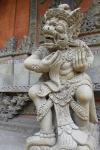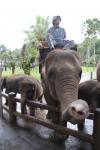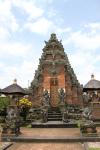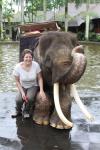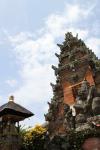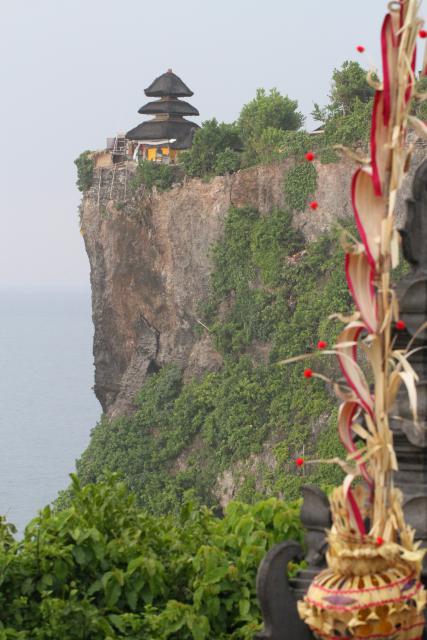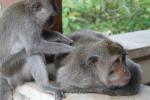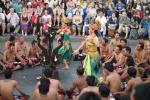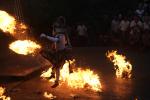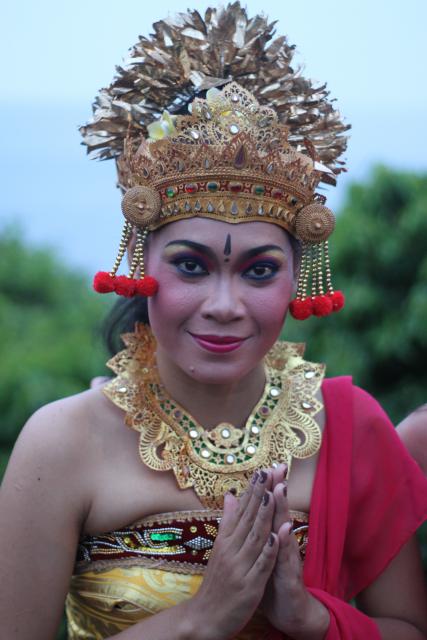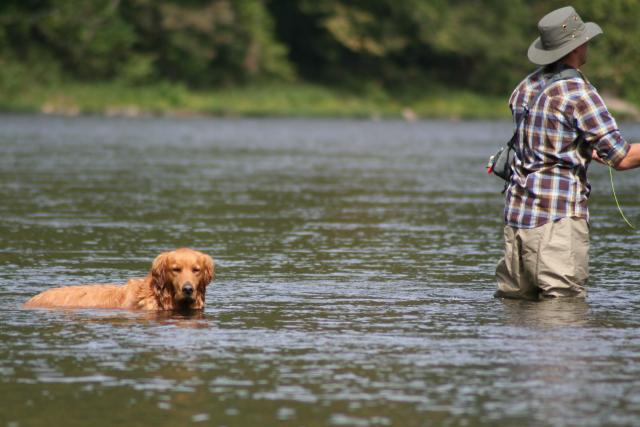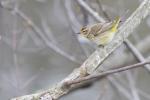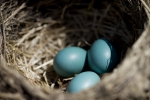people
California Trip: Sequoias
ktuli — Tue, 09/11/2012 - 19:20
Just inside the south entrance to Yosemite National Park is the Mariposa Grove of Giant Sequoias. As we have seen before, photographing trees - especially massively large ones - can be quite challenging, but you just can't pass up an opportunity to shoot such incredibly impressive organisms.
Technical Data: Canon EOS 7D, Sigma 10mm f/2.8 EX DC HSM Fisheye (borrowed), 1/40 sec at f/5.6. ISO 800. Raw processing in Adobe Camera Raw.
Normally, I try to eliminate random other people from my photos, but in this case, it helps to serve as a point of reference to show just how huge these trees are.
Technical Data: Canon EOS 7D, Sigma 10mm f/2.8 EX DC HSM Fisheye (borrowed), 1/20 sec at f/5.6. ISO 800. Raw processing in Adobe Camera Raw.
In both of the above shots, I used a friend's fisheye lens to help me get the entire tree in the shot - here in the second shot, Anya provided a lovely model to provide the point of reference. The natural distortion of the fisheye lens certainly creates a distinct view, and to some extent, it actually hides the immensity of the trees.
Technical Data: Canon EOS 7D, Sigma 10-20mm f/4-5.6 EX DC HSM AF at 10mm, 1/60 sec at f/5.6. ISO 800. Raw processing in Adobe Camera Raw.
We even got a shot with the two of us... and yes, if you're wondering - sequoias make me feel short.
- Bill
PS: As an additional trivia note, Sequoia is one of the shortest English words that contains all five vowels!
Bali: Batik
ktuli — Sun, 02/20/2011 - 19:56
Well, I don't know if anyone else is tired of the dive photos yet. I'm certainly not, but I figured I'd switch things up a little and bounce back to Bali for a couple posts to give others a break just in case.
One of the things we did on our second day in Bali was to visit some of the crafts areas. Bali is well known for wood and stone carving, silversmiths, and for a type of fabric called batik. I didn't take too many photos this day, but I did take this one of a woman making batik fabric, and really love it.
Technical Data: Canon EOS 7D, Canon EF 50mm f/1.8 II, 1/60th sec at f/2.8, ISO 500 (auto). No post production
What Works: The composition is strong with the woman's head taking up a third of the shot and her hand resting on one of the other thirds. The balance given to the photo by the darkened drawing offsetting the lighter area of the photo. But really, what makes this photo nice is the shallow depth of field produced by the relatively wide aperture of f/2.8.
What Doesn't Work: Honestly, I find it a bit tough to find anything wrong with this photo. The dark shape in the bottom right is a tad distracting, but really - that seems like nitpicking.
Anyway, I guess I could explain what is going on in this photo.
Batik fabric is made by applying a layer of beeswax to the fabric, then dying it. The wax prevents the cloth from being dyed and is then removed by boiling the cloth. This produces a negative image of the pattern. If a piece of fabric is to have multiple colors, the wax is reapplied again to the other areas and the fabric is dyed again with the subsequent colors. Each process is done by hand by women who use the tool shown here to trace or fill in the pattern with the beeswax.
The photo below shows how a two color pattern is created, first from a pencil drawing, to a wax traced drawing, then dyed, then more wax applied, then more dye, etc, etc.
The batik cloth is used often to make sarongs which are worn by Balinese men during temple ceremonies, and by women just about any time. Foreign tourists are required to have their knees covered while visiting temples as well, so sarongs are often available for rent outside of temples. Anya and I purchased some batik sarongs partially as souvenirs, and to have available when visiting the temples. Anya's has a nice flower pattern on it, while mine was printed with a bunch of different sea creatures (of course)!
- Bill
Bali: Barong, Temple, and Elephants
ktuli — Thu, 02/10/2011 - 20:36
It looks like we're sticking with that vertical format for today's photos... I tend to try using that format often, but for whatever reason, I used it to great extent during the trip.
Today's set comes from our second and third days in Bali. First, we have a Barong costume. This was from a Barong Dance that we attended. Barong is the king of the spirits and protects Bali from evil. After the dance, we went to visit another temple - Pura Desa Batuan. Pura Desa Batuan is actually two separate temples, and the grounds have a great deal of statuary. We also visited several areas to see different Balinese crafts, but I'll save that for another day.
The third day, we visited the Elephant Safari Park where we got to ride an elephant through the jungle.
|
|
||
I like the feel of the photo of the statue (second from top on left), with the just slightly blurred background showing more of the intricate stone carving without being distracting, plus the placement of the statue covering two thirds of the frame provides a nice balance to the photo.
Whereas the first photo of the temple (third from the top on left) is very symmetrical and is generally just a record shot, the second photo (bottom on left) provides a much more dynamic vantage point, and adds a feeling of drama to the scene. I do regret not including a tiny bit more temple and a little less sky in the shot, but I do certainly like how the darker exposure makes for a much more moody feel to the second photo as well.
For the elephant reaching towards the camera (second from top on right), I shot in rapid burst mode while holding a bit of food for the elephant below the camera. As the elephant reached for the treat, I snapped away. I have an entire series of shots from that, but this one was definitely the best. Unfortunately with the overcast sky and bright conditions, the photo is over-exposed (which seemed to be a typical problem for many of the shots from the trip, and I wasn't paying enough attention to fix it - shame on me!).
Lastly, the elephant statue (bottom on right) shot was taken by Anya, and despite it being over-exposed (again, my fault for not adjusting the camera's settings for the conditions), I absolutely love the perspective produced by this shot. Everything in the shot is placed perfectly in the frame, and the exaggeration of the elephant's trunk helps to contribute to it being a nice line to lead your eye through the shot.
Drop me a comment and let me know what you think, and be sure to tune in again soon as I'll be starting into the underwater photos from Wakatobi!
- Bill
Bali: Uluwatu Temple & Kecak Fire Dance
ktuli — Wed, 02/09/2011 - 21:03
I'll be deviating from the normal method of doing things for the photos from this trip. There are far too many photos and too much background information for each photo to try posting them individually. The posts will likely be longer than normal, but will likely contain more photos and less technical discussion (though there will still be some - this is a photography site after all!)
Our trip began in Bali, Indonesia after a total of 28 hours of travel time and a 13 hour timezone adjustment. We got into Denpasar in the wee early morning hours on Jan 22nd, made our way to our hotel - the Puri Santrian resort (perhaps more on that in another post) - and crashed for a few hours. We spent the morning and afternoon lounging around the hotel, some folks hopped into the beautiful pool, while Anya and I strolled the grounds taking photos (of course!).
Towards late-afternoon, we headed off to the beautiful Uluwatu Temple (Pura Luhur Uluwatu). Uluwatu is a directional temple in Bali's south-west region which is meant to guard Bali from evil spirits. The temple sits up at the very edge of a 250 foot cliff that overlooks the Indian Ocean.
One of the major residents of the temple are monkeys. And apparently, these are thieving monkeys. The general setup is this: Tourists come, monkeys steal stuff from tourists, tourists buy fruit from vendors, tourists bribe monkeys with fruit to get their stuff back. Luckily we didn't have anything stolen, though Brigette apparently almost lost a fistful of hair when a monkey attempted to steal her hair band.
After visiting the temple and taking in the view from the cliffs, we proceeded to the Kecak Dance (or Ramayana Monkey Chant, or Fire Dance) nearby. The Kecak Dance is kind of interesting as it was basically invented by a couple westerners as a way to present some Balinese culture in a way that would appeal to westerners' limited tastes.
As usual, mouse over the thumbnails for the larger image to display.
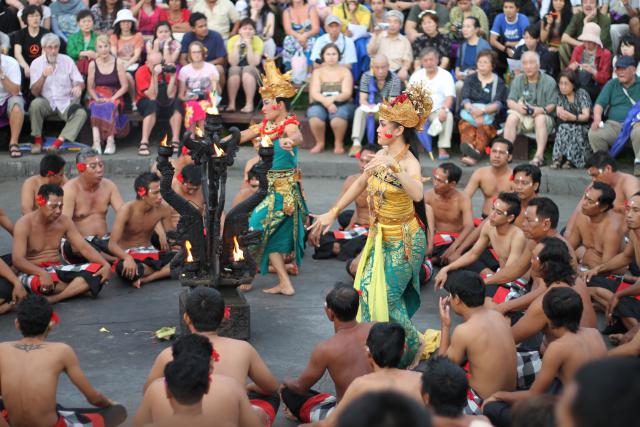
The dance consists of a circle of men who chant all of the "music" for the dance (visible in the shot second from the left above). They repeat a few sounds over and over, sometimes alternating sounds between different sections of the group. There are no musical instruments or spoken words to the story depicted in the dance, so the chanting provides the rhythm and marks the important events in the story.
At the end of the dance, they set up a bunch of piles of what I thought was shredded coconut husks and set them on fire, and the monkey character then gets to kick them around (as depicted in the shot to the far right). It wasn't quite what I expected when I was told we were going to a "fire dance" - I think I was thinking of something more Hawaiian with a guy twirling a flaming baton, but this was still entertaining and impressive.
For the dance (and whole trip), I was limited in the lenses I was able to use. I switched between the Canon EF 50mm f/1.8 II and my new Canon EF 100mm f/2.8L Macro IS USM. I wanted the wide apertures (f/1.8 and f/2.8) to help with faster shutter-speeds given the twilight and then dark conditions. Also during the dance, I switched to automatic ISO mode, to allow the camera to select higher ISOs to also allow for faster shutter-speeds. I found that I took a good deal of photos in a vertical orientation (see below) as a way to both capture more of the character's full costume as well as a way to eliminate clutter and unnecessary elements (ie: spectators). If you're interested in any of the specific technical data for any shots here, simply post a comment and I'll provide them.
I am not going to go into the roles of each character, but provide some photos of each. Above there is a photo with two characters who basically provided comic relief, and I swear the one looks like Predator! Others include the Monkey, a bird of some sort, and others (see below). The costumes were really interesting, and you can see my usage of the vertical format to be able to isolate a single character.
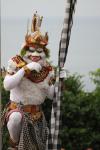 |
|
|
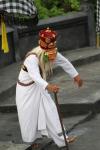 |
||
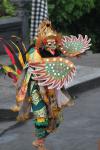 |
||
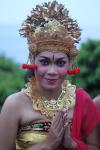 |
The last photo there - of the one female dancer - is Anya's favorite of this set. The wide aperture (f/1.8) on the 50mm lens used provides the nice soft background. Additionally, the vertical format allowed me to isolate the woman in the shot while she was flanked by tourists, all pushing to get their own photos alongside the performer.
Given the dim lighting and general disarray and constantly moving subjects, all of these shots came out fantastic. So remember the lessons here. Shorten your exposure time (faster shutter speed) as much as possible by (1) using as wide of an aperture as possible, (2) if your camera works well at high ISOs, switch to auto-ISO mode. Additionally, remember that sometimes the vertical format will help you to eliminate distracting elements from your photos, so rotate the camera and see what you can get.
- Bill
Take Advantage of Situations
ktuli — Sun, 02/21/2010 - 16:40
I don't normally take photos of people. I don't know why, it just really isn't my thing. For whatever reason, I feel more comfortable tracking down a tiny little insect than I do trying to take photos of people.
On one occasion, I was out taking photos, and doing my usual thing - which in this case was chasing a butterfly. A guy and his dog wandered into the area where I was shooting. For a while I continued chasing the butterfly, but then stopped and watched as the guy began fly-fishing and his dog followed his every move. The scene started to take on the feel of a photo I'd see in a magazine.
So I decided to take advantage of the situation and step out of my comfort zone and try something new. After asking the gentleman if he minded if I took some photos, I started firing off shots.
Technical Data: Canon EOS Digital Rebel XT, Tamron 70-300mm f/4-5.6 Di LD Macro1:2 at 300m, 1/2000 sec at f/5.6, ISO 400. No post production. Cedar Creek Park, Westmoreland County, PA.
Why This Photo: I really liked the way the dog followed his owner, the scene really played out like something I thought looked like a 'classic' photo.
What Works: The eye contact with the dog provides some engagement into the scene, and I think counterbalances the fact that the fisherman is looking out of the frame. And even though you can't tell this from the photo, I think the fact that I stepped out of my comfort zone really counts for something here.
What Doesn't Work: First, this is something that bugs me a lot, yet I do it often - the horizon is not level (I've bought a bubble level to help work on this!). The framing is a bit poor, and pulling back the focal distance a bit - maybe to just 250mm would have made for a much nicer shot. Finally, the reflections are a bit distracting, I don't have a polarizing filter for this lens, but this might have been a good place for one.
The bottom line is that this isn't the greatest shot, but I took advantage of an opportunity and tried something a little new with my photography. I know that my favorite photography is macro, but I really am trying to work on expanding out into other areas, and taking advantage of a situation when it presents itself will be key to getting into that.
- Bill

